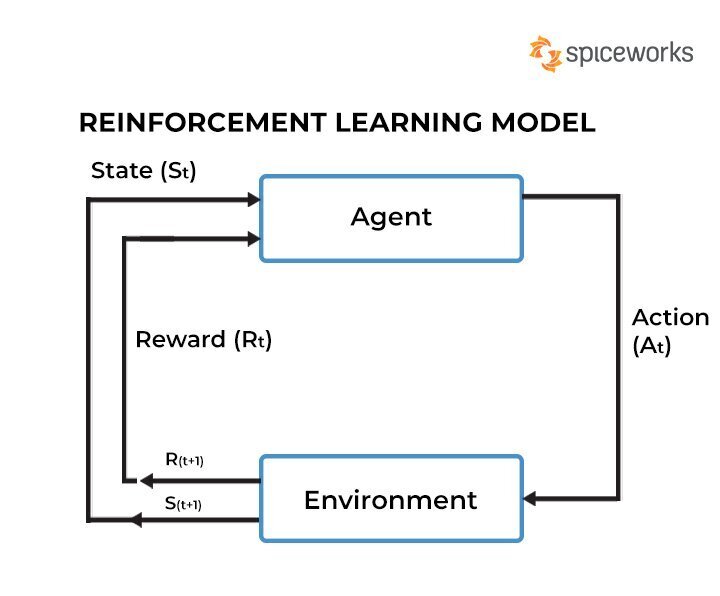Reinforcement Learning (RL) is a subfield of machine learning focused on how agents can learn to make decisions by interacting with an environment. The core idea is to learn a policy that maximizes cumulative rewards through trial-and-error interactions. Unlike supervised learning, where the model learns from labeled data, RL agents learn from the consequences of their actions, receiving feedback in the form of rewards or penalties.
Key Concepts
Components of Reinforcement Learning
-
Agent: The learner or decision-maker that interacts with the environment.
-
Environment: Everything the agent interacts with, which provides feedback based on the agent’s actions.
-
State: A representation of the current situation of the agent in the environment.
-
Action: The choices available to the agent that can affect the state.
-
Reward: A scalar feedback signal received after taking an action, indicating the immediate benefit of that action.
Learning Process
The RL process typically involves the agent observing the current state of the environment, selecting an action based on its policy, receiving a reward, and transitioning to a new state. This cycle continues, allowing the agent to update its policy based on the rewards received. The objective is to develop a strategy that maximizes the total expected reward over time.
Types of Reinforcement Learning
- Model-Free Methods: These methods do not require a model of the environment. They include:
- Q-Learning: A value-based approach where the agent learns the value of actions in different states.
-
SARSA (State-Action-Reward-State-Action): An on-policy method that updates the action-value function based on the action taken.
-
Model-Based Methods: These methods involve creating a model of the environment to predict future states and rewards, allowing for planning and optimization of actions.
Applications
Reinforcement Learning has been successfully applied in various domains, including:
- Robotics: For autonomous navigation and manipulation tasks.
- Game Playing: RL algorithms have achieved superhuman performance in games like chess and Go.
- Healthcare: For optimizing treatment plans and resource allocation.
- Finance: In algorithmic trading and portfolio management.
Advantages and Challenges
Advantages
- Autonomous Learning: RL agents can learn complex tasks without human intervention.
- Adaptability: They can adjust to changing environments and learn from new experiences.
Challenges
- Sample Efficiency: RL often requires a large number of interactions with the environment to learn effectively.
- Exploration vs. Exploitation: Balancing the need to explore new actions versus exploiting known rewarding actions is a fundamental challenge.
Reinforcement Learning continues to evolve, with ongoing research focused on improving efficiency, scalability, and applicability to real-world problems. Its ability to learn from interaction makes it a powerful tool in the field of artificial intelligence[1][3][5].
Further Reading
1. https://web.stanford.edu/class/psych209/Readings/SuttonBartoIPRLBook2ndEd.pdf
2. Part 1: Key Concepts in RL — Spinning Up documentation
3. Reinforcement learning – GeeksforGeeks
4. Sutton & Barto Book: Reinforcement Learning: An Introduction
5. Everything You Should Know About Reinforcement Learning
Description:
Learning optimal actions through interactions with an environment to maximize rewards.
IoT Scenes:
Robotics, autonomous systems, and adaptive control systems.
Robotics: Training robots to perform tasks and learn optimal actions through trial and error.
Autonomous Systems: Optimizing decision-making in autonomous vehicles and drones.
Smart Grid Management: Managing and optimizing energy distribution and consumption.
Adaptive Control: Improving system performance through adaptive learning and decision-making.


